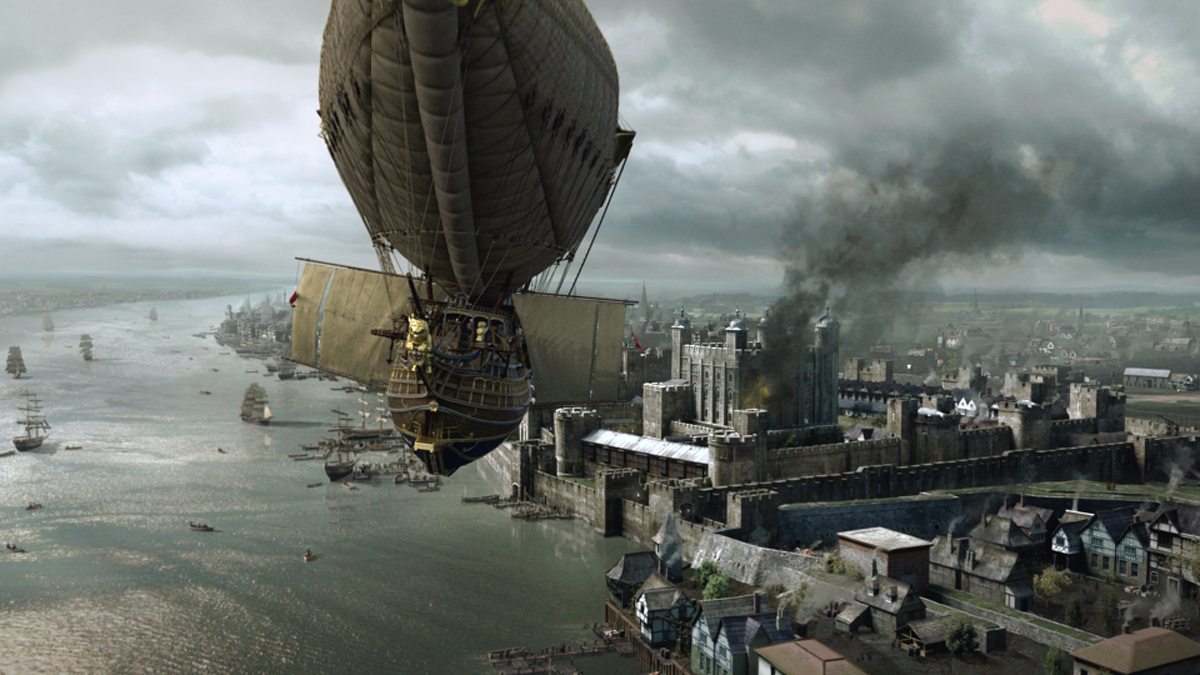Ara Khanikian is back for the third time on The Art of VFX. After telling us about his work on JONAH HEX and RESIDENT EVIL: AFTERLIFE 3D, he explains the work of Rodeo FX on THE THREE MUSKETEERS.
How did Rodeo got involved on this show?
Mr. X approached us to work on this project. Having worked with Mr. X in the past on projects like RESIDENT EVIL: AFTERLIFE, DEATH RACE and REPO MEN, we had a very strong relationship established and the matte paintings and environments that were required for this project were a perfect match with our expertise.
How was your collaboration with Production VFX Supervisor Dennis Berardi?
Our collaboration with Dennis Berardi was very good. Our communications would be mainly through weekly cinesync sessions with Sebastien Moreau, Rodeo FX’s president and VFX supervisor, and the department leads.
What have you done on this show?
Rodeo FX mainly worked on the establishing shots of London and Venice.
We also worked on the shots establishing the house of the Musketeers in Paris and the attack by Aramis in night-time Venice as seen in the first few minutes of the film. We also worked on the Port of Calais shots.
How did you proceed step by step to create those different establishing shots? Did the production gives you some sketch or previs?
The way we like to approach these kinds of establishing shots is by doing a lot visual research. We go through a lot of historical books, pictures and sketches for reference, we search the web for a lot of images and pictures (old and new) to have as much reference material as possible.
We also received a lot of sketches from production which gave us a very clear idea on what the director liked and wanted to see. All these shots were already previz-ed by Mr. X which was a crucial step for these kinds of shots.
Before starting work on our shots, we started with a lot of R&D and concept work to get a clear idea on the look for these shots. Some of them were very tricky because of the very ambient lighting of London. It’s not an easy task creating a full CG environment in a very overcast lighting setup. While this was getting perfected, all the shots were going through our camera matchmove and layout departments. Being a stereo project, a great deal of attention was given to the layouts and matchmove of these shots. FBX scenes were exported and heavily used in comp on our Flame and Nuke systems. Matte painters were creating these beautiful environments while the CG department was creating the massive asset for the Tower of London and its environment.
By having FBX scenes, that were getting updated frequently, the compositors were able to start work early on in the pipeline, carefully placing smokes from chimneys stacks, adding torch-lights, projecting water plates and all this while the matte paintings and CG layers were in a very embryonic stage.
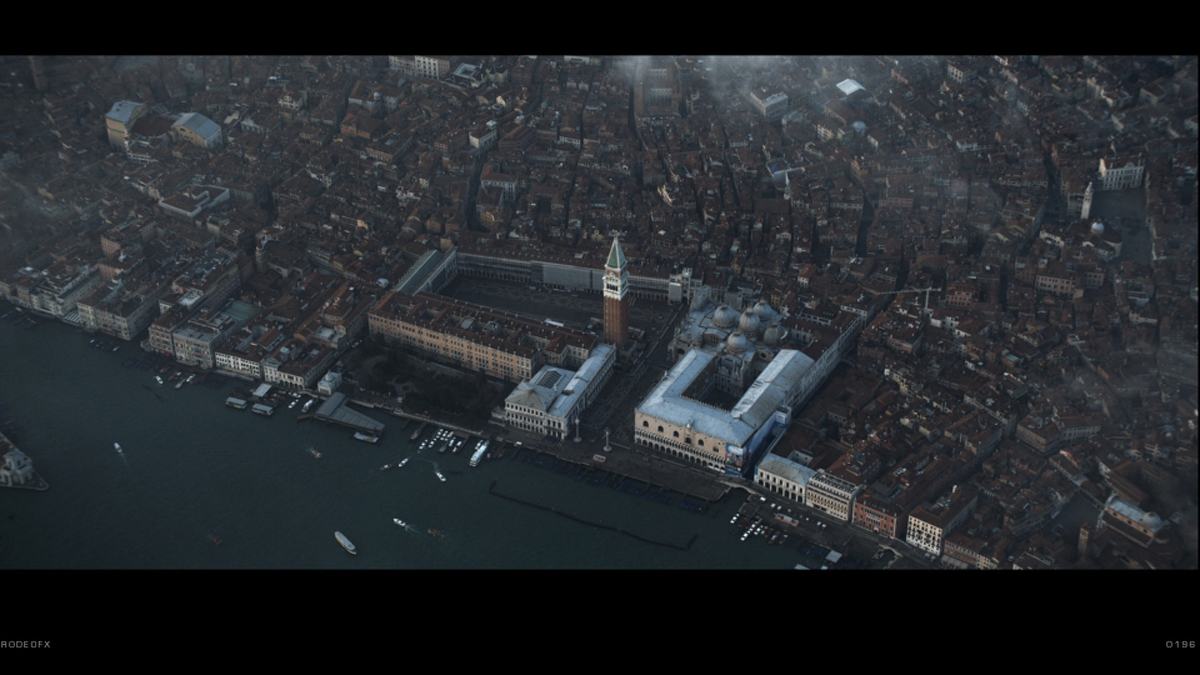 |
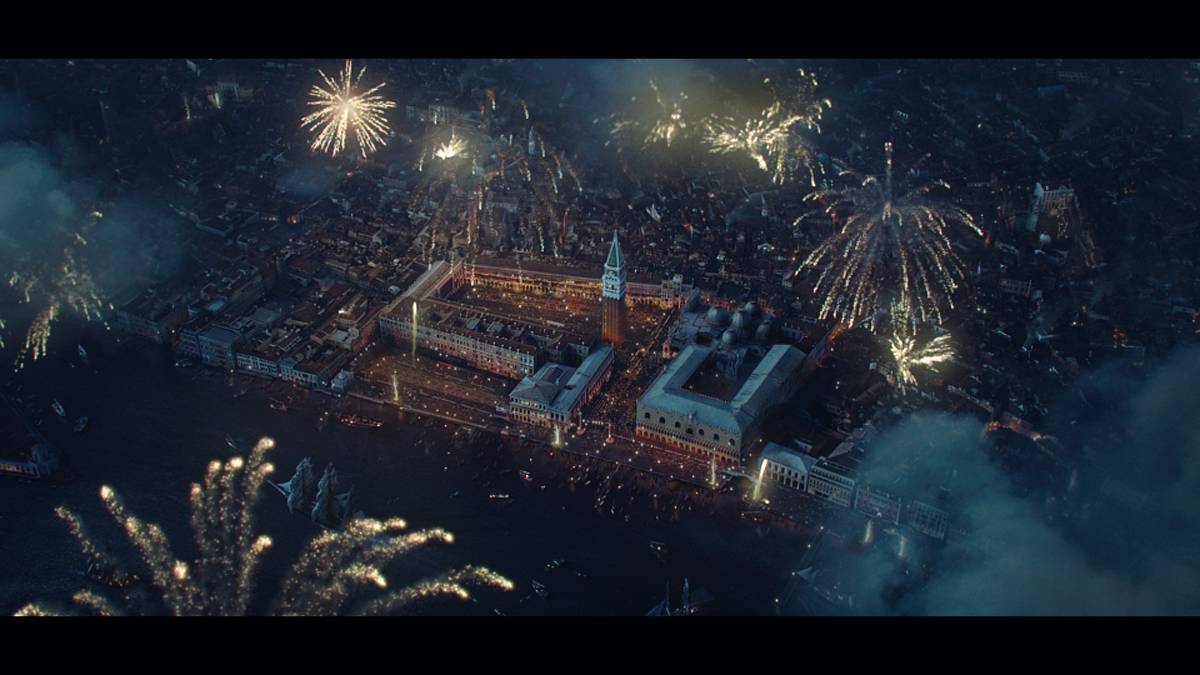 |
How did you recreate the beautiful shots showing Venice (both night and day) and the fireworks?
Production provided us with helicopter-shot footage of Venice using a RED camera. We matchmoved these shots and created a stereo rig in layout, because these shots were shot mono and had to be converted to stereo. These aerial plates were shots with a large zoom so, in layout, we decided to modify the lens to simulate what we would have seen if the helicopter was a lot lower and closer to the ground, while still keeping the same framing. This allowed us to have a much more interesting depth and stereo by introducing a little bit of parallax and perspective changes in all the Venice buildings.
Once we had an approved stereo layout, our matte painters started painting over the principal photography plates and transformed the present-day Venice to what it would have looked like in the 17th century. We painted out everything that looked modern including all the light sources and replaced them with torch lights and candles. Having a convincing moon-lit feeling with torch-lights in windows and streets were a big part of the look for these shots.
These plates were all shot daytime, so we gave them a night-look (and a dawn look to one of them). This look was a combination of matte-painting and color-correction in comp. We also created CG fireworks and crowd simulations in Maya and animated CG ships and gondolas in Softimage XSI.
Live action elements like smoke from chimney stacks, torch-lights, practical fireworks and water (canal and sea) were all added in comp.
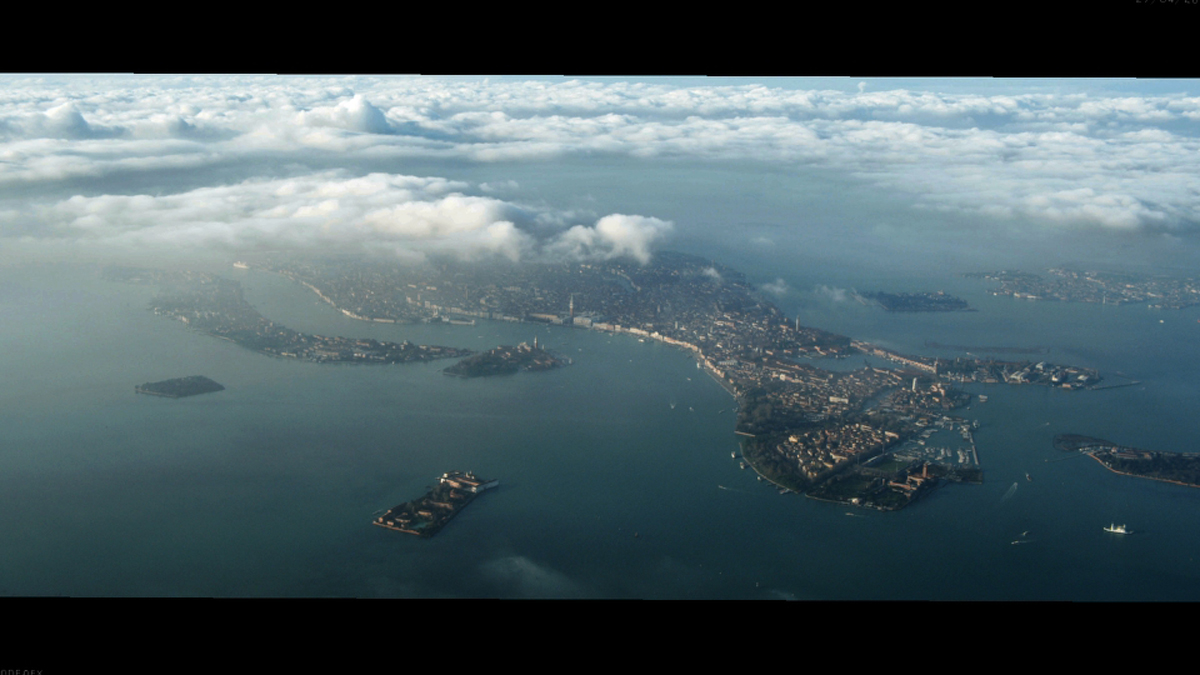 |
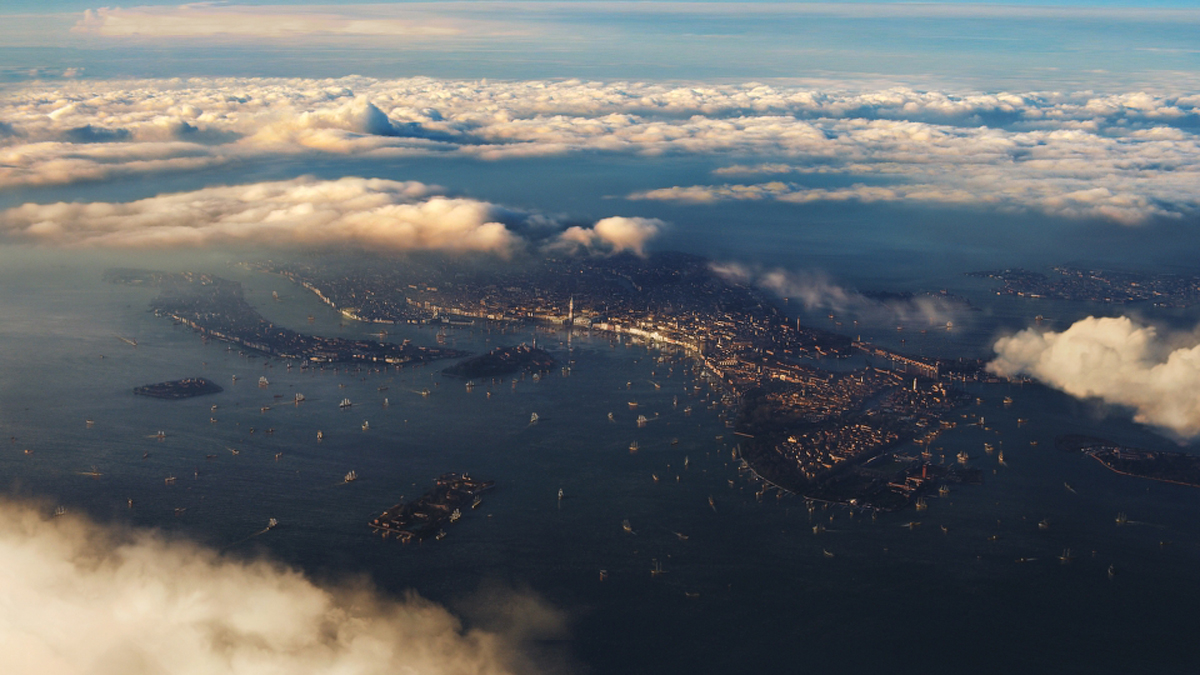 |
Can you tell us more about the introducing shots of Athos and Aramis?
In these shots, we created the aerial shots of Venice with all the fireworks and a very festive feeling with crowd simulation and boat animations. We composited Aramis, who was shot on green-screen, on top of a bridge looking down on a canal in Venice just before his attack on a Gondola.
We also worked on Athos’ attack on the guards, creating set extensions and a CG crossbow and arrows
How was filmed the shot of D’Artagnan coming in Paris?
This shot was filmed on a bridge in Wurzburg, Germany. A green-screen was used for the first part of the shot, behind D’Artagnan. The second part of the shot on the bridge was shot with a lot of costumed stand-ins.
Can you tell us in detail the creation of this great shot?
We were provided with concept work with this shot showing us what the director wanted to see. A farmer’s market and a rural scene was to be created in the A-part of the shot and a 17th century Paris, in the B-part. The bridge and its actors were rotoscoped out of the plate and integrated into a full CG / matte-painting of the Paris environment.
The whole shot was a blend of matte-paintings and CG elements with live-plate elements. Crowd elements were shot on green-screens and composited into the digital environment. Live smoke elements and little pit-fires were added. The Seine was created by projecting live water plates in comp. Mr. X provided us with their asset of Notre-Dame which was integrated into our matte-painting.
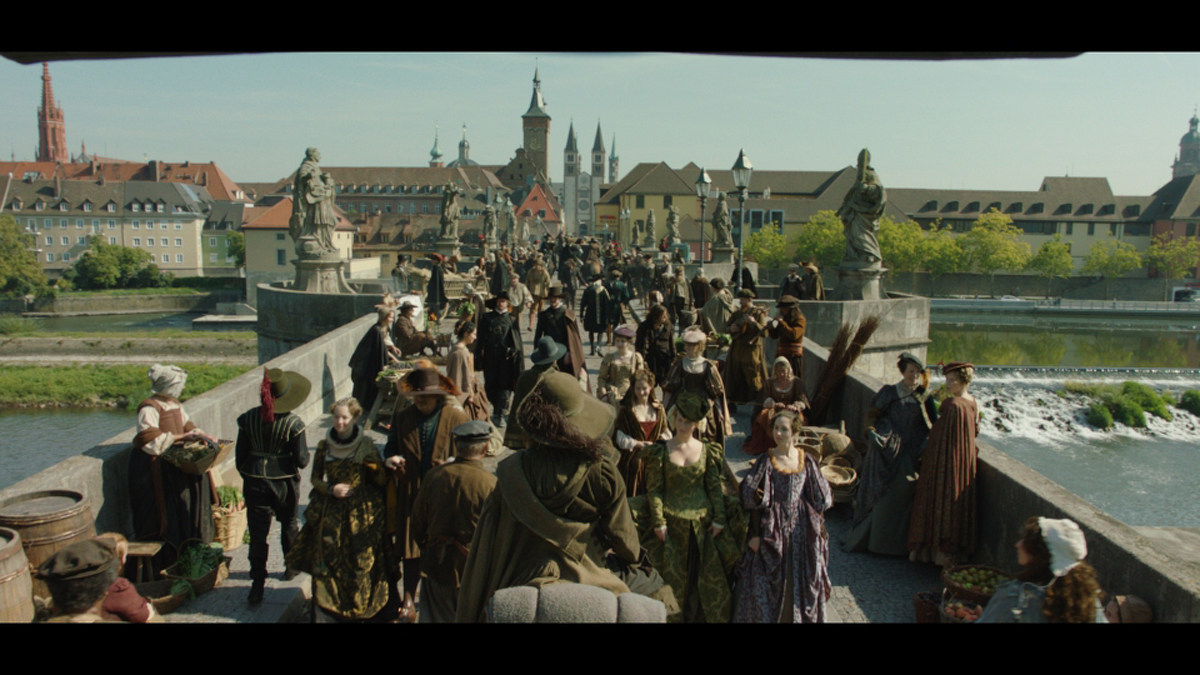 |
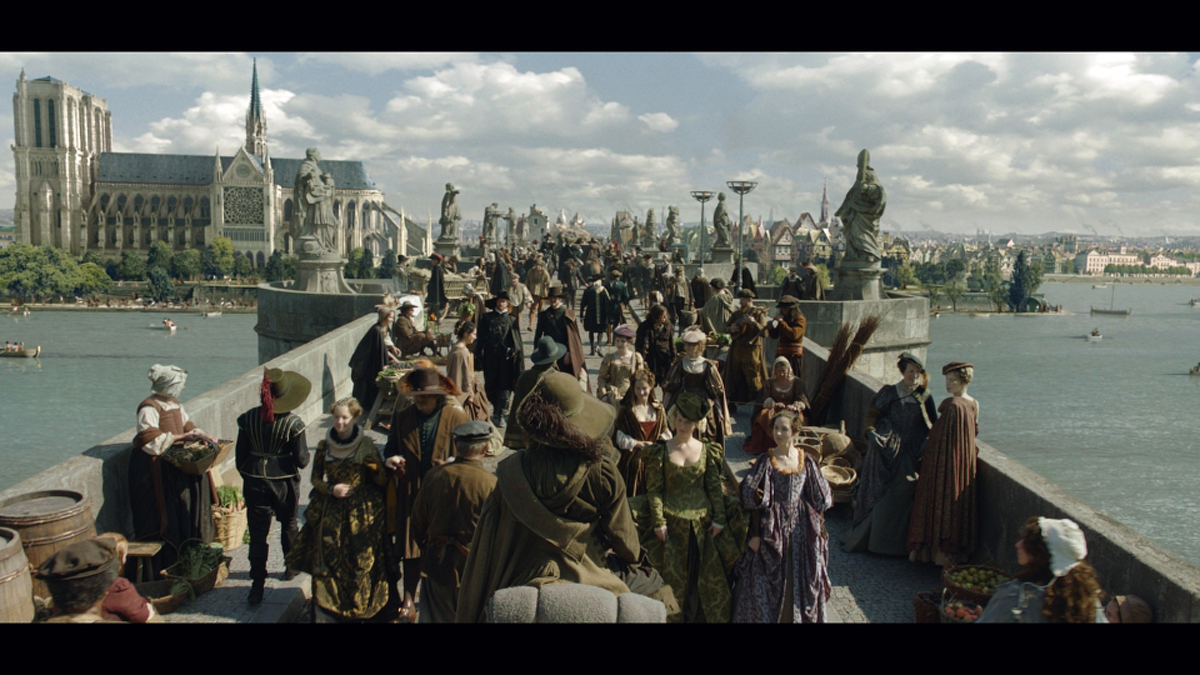 |
How did create the Musketeers House?
The Musketeers house was actually plate photography. We repo’ed it down and created the environment around the house.
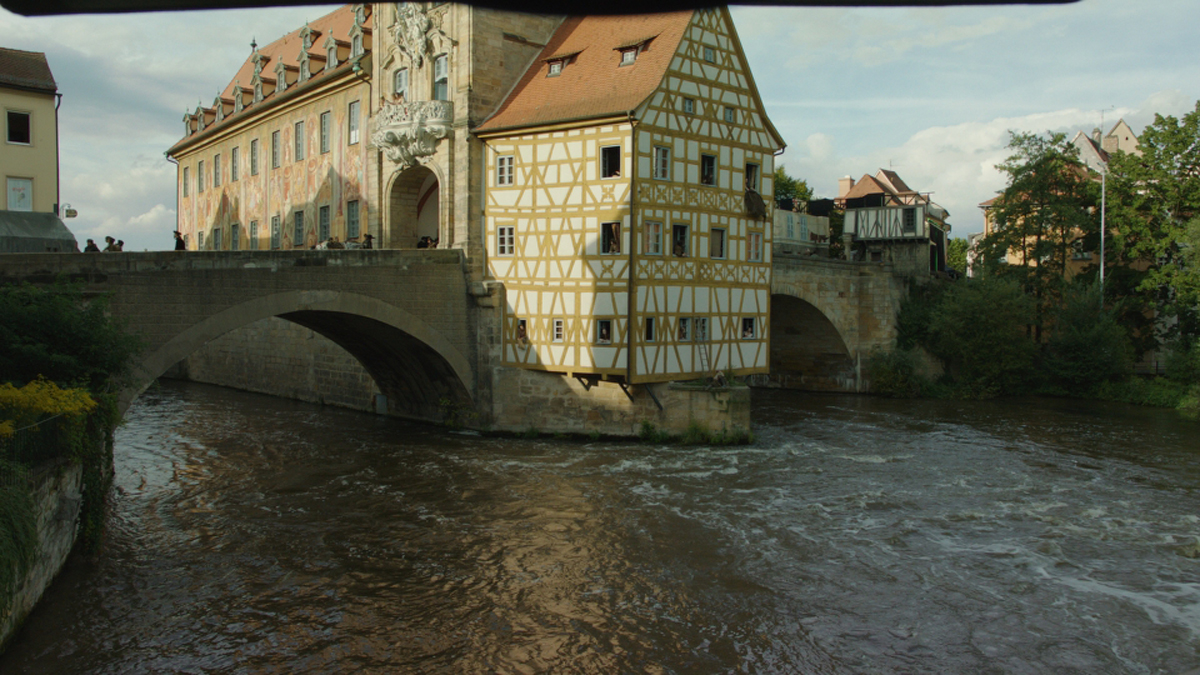 |
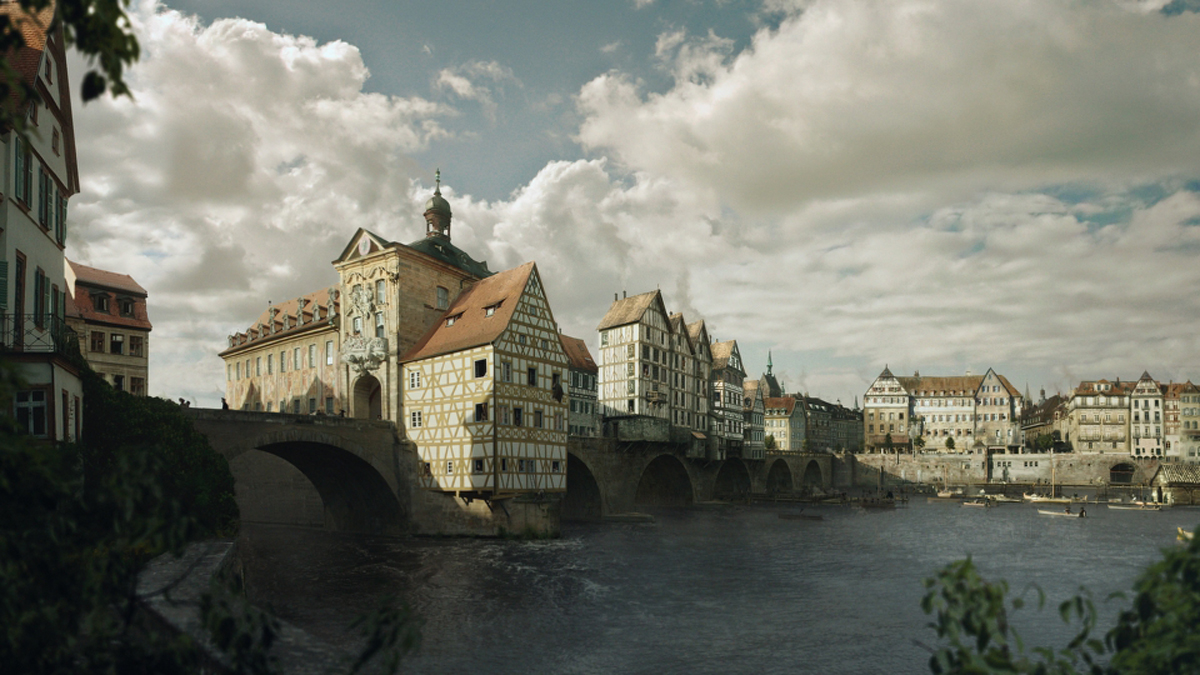 |
What did you do on the shot in which in Milady opens a secret room in the Queen’s Chamber?
We animated the fireplace and the mirror to back-up approximately 4 feet to reveal the secret vault in the Queen’s chamber. We recreated the reflections in the mirror with set photos.
How did you recreate Calais?
We created the port of Calais with a matte-painting. Production provided us with beautiful concept work and we projected photographed period ships onto geometry and projected ocean plate. We decided, for these shots, to use Nuke to do all the projections of the matte-painting. So, the matte painters exported their PSD file and the projections onto geo was actually all handled in Nuke. We were quite satisfied with the result. ?
Can you tell us more about the London Tower?
The Tower of London was a very big asset that we created. It took us 4 months to complete it and it had a ton of detail!
How did share the assets with Mr. X teams?
We shared a couple of asset with Mr. X, mainly the Notre-Dame that we needed to use in two of our shots and the airship that we integrated in our Tower of London shots. We received the Airship as a rendered element with all the passes to do the final comp. For the Notre-Dame asset, we only needed a specific angle of it so we sent Mr. X a 3d scene and they used it to render their Asset with.
What was the biggest challenge on this project and how did you achieve it?
For this project, Our biggest challenge was creating huge assets and a lot of different environments in a very limited amount of time. One other challenge was creating a very ambient and overcast lighting for the Tower of London shots. Having a bright sunny day would have facilitated the task but achieving the photo-realism we were aiming for in this kind of lighting was a bit of a challenge.
Was there a shot or a sequence that prevented you from sleep?
No not really… with great artists and enough time, anything is possible (laughs).
What do you keep from this experience?
This project was a very fun one, we had a lot of variety in our shots and the sets and costumes were amazing. Working on a period film like this one is always great fun.
How long have you worked on this film?
Around 4 months.
How many shots have you done?
We delivered 29 shots.
What was the size of your team?
We were a team of about 15 artists
What is your next project?
We’re currently working on MIRROR MIRROR Tarsem Singh’s adaption of Snow White, UNDERWORLD 4, JACK AND THE GIANT KILLER.
A big thanks for your time.
// WANT TO KNOW MORE?
– Rodeo FX: Official website of Rodeo FX.
– Mr. X: Official website of Mr. X.
– Mr.X Interview: Interview of Eric Robinson about THE THREE MUSKETEERS.
© Vincent Frei – The Art of VFX – 2011



